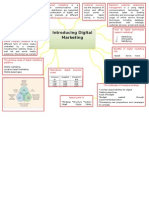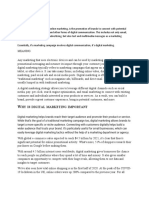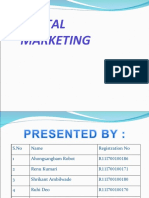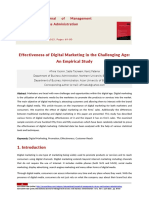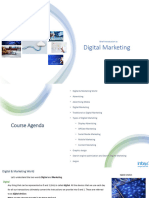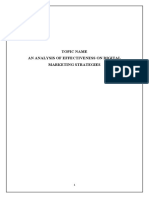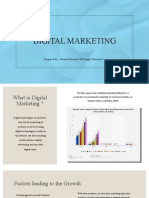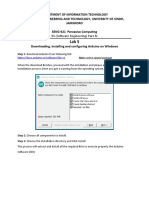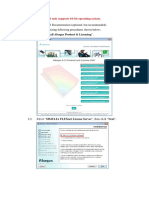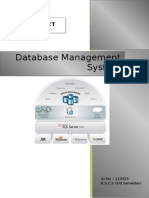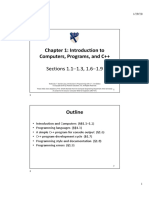0% found this document useful (0 votes)
28 views13 pagesChapter 1
The document discusses digital marketing and the 5Ds framework of digital marketing interactions involving digital devices, digital platforms, digital media, digital data and digital technology. It describes benefits of digital media such as interactivity, intelligence, individualization and independence of location. Applications of digital marketing include advertising, direct response, sales transactions, lead generation, distribution and customer service. The benefits of digital marketing include identifying customer needs, anticipating their actions, satisfying them and applying the 5S framework of selling, serving, speaking, saving and extending the brand online.
Uploaded by
sherrytrader03Copyright
© © All Rights Reserved
We take content rights seriously. If you suspect this is your content, claim it here.
Available Formats
Download as PDF, TXT or read online on Scribd
0% found this document useful (0 votes)
28 views13 pagesChapter 1
The document discusses digital marketing and the 5Ds framework of digital marketing interactions involving digital devices, digital platforms, digital media, digital data and digital technology. It describes benefits of digital media such as interactivity, intelligence, individualization and independence of location. Applications of digital marketing include advertising, direct response, sales transactions, lead generation, distribution and customer service. The benefits of digital marketing include identifying customer needs, anticipating their actions, satisfying them and applying the 5S framework of selling, serving, speaking, saving and extending the brand online.
Uploaded by
sherrytrader03Copyright
© © All Rights Reserved
We take content rights seriously. If you suspect this is your content, claim it here.
Available Formats
Download as PDF, TXT or read online on Scribd
/ 13

